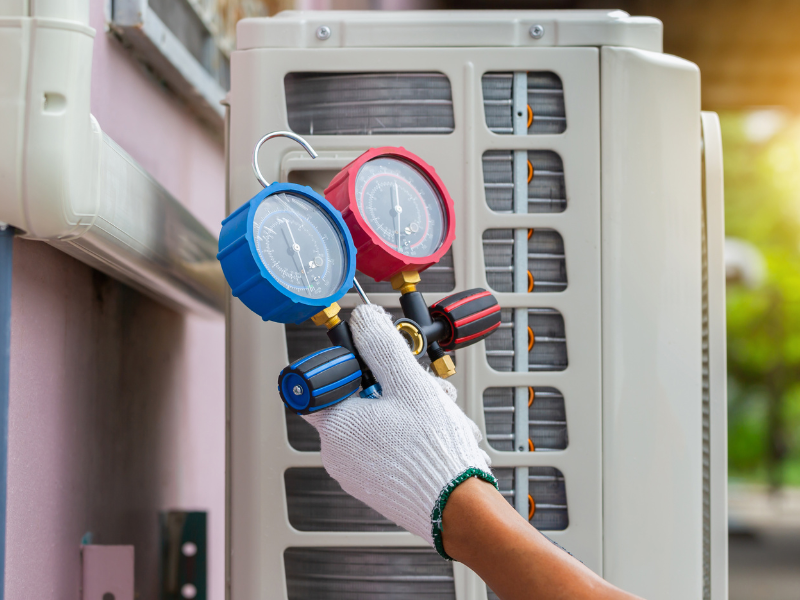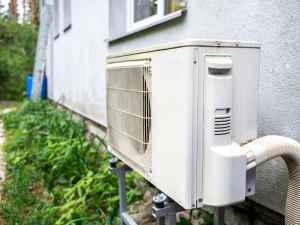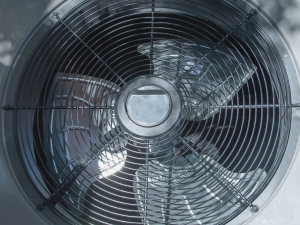Air conditioners are fairly easy to understand, especially if you get the chance to learn about how the system’s parts work. At its simplest form of understanding, an AC pulls in hot air before releasing cool air back into your home.
Homeowners with a little more knowledge about their HVAC systems can find a part called an expansion valve in their air conditioner. But what does the expansion valve do exactly and why is it necessary?
To answer this question as well as any others you might have, we’ve put together this article as a guide. We’ve also included a few signs that can help you see if your ac’s expansion valve is failing or is faulty and what you can do to fix the problem.
If you need to replace the air conditioner expansion valve and prefer to have a professional do it, our team at Clover Contracting is ready to help. We can also help you deal with a variety of other HVAC projects, including repairs and installations.
What Is an Expansion Valve?
Though there are different types of expansion valves that all work in slightly different ways, they all have the same function. At its placement in an air conditioner’s system, an expansion valve is responsible for further cooling the refrigerant passing through it. It does so by essentially expanding the liquid. This releases more of the pressure that the refrigerant has, letting it release the last of its heat and turning everything in the pipe into a fully low pressure liquid state.
How Does an Expansion Valve Work in an Air Conditioner?
The best way to understand the purpose of an expansion valve is by understanding how the refrigerant inside the system works as well. Most AC models function with the use of refrigerant that runs through piping. When the system is on and hot air is brought in, the refrigerant is responsible for absorbing the heat into it. The now cool air is blown back into the building, but that heat still needs to be released.
Naturally, the best place for the refrigerant to release heat is outdoors. It’s pushed through the system’s specialized piping in a gas state to the AC’s outdoor unit where the heat is blown out of the refrigerant. The now-liquid is then brought in to absorb more heat. However, at this point, the refrigerant is still too warm to work effectively. This is where the AC’s expansion valve comes into play.
Why Expansion Valves Are Important for AC Functionality
As a result of how the air conditioner’s refrigerant works and it still can be warmer than needed after releasing the absorbed heat, expansion valves are quite a vital part of the HVAC system. The pressure that the valve releases – and by extension, the heat – allows the refrigerant to work to its maximum efficiency. As refrigerant reaches its coldest after passing through the valve, more heat can be absorbed into it.
Thanks to this, the air that’s blown into your home or office is much cooler than it could be without an efficient expansion valve. However, there are also quite a few more benefits.
Keeps the Air in Your Home Cool
If you’re wondering, “what does the expansion valve do?” you should take a moment to learn how the part cools the air. The valve itself doesn’t directly influence the temperature (as mentioned earlier). To absorb and release heat, the refrigerant shifts from a liquid state to a gaseous one. The key difference, though, is that heated refrigerant often has higher pressure than when it’s cold.
When the liquid refrigerant reaches the expansion valve, it still has a fair amount of pressure inside it, leading to the liquid still being hot. By the process of expanding the liquid into a gas state, that excess heat is then released. The result is a low pressure gas refrigerant that’s ready to absorb more heat while cooling the room efficiently.
The Evaporator Unit’s Pressure Is Maintained
The final ac expansion valve function is to help maintain the system’s required internal pressure. To be properly effective, a cooling system relies on maintaining a low pressure inside the evaporator unit’s coils. This is primarily because the refrigerant needs low pressure to transform back into a gas form. The expansion valve controls the pressure by allowing just a small amount of refrigerant to flow into the coil at a time.
Common Signs of a Failing Expansion Valve
Since we’ve answered the question, “what does the expansion valve do?”, knowing how it relates to some of the most common problems an AC can face is also a great help. If no other guides or solutions seem to work, you can always check the expansion valve’s condition.
High Pitched Noises from the Air Conditioner
If you hear these kinds of sounds while the refrigerant lines are intact, there’s a chance that expansion valves are part of the problem. A malfunctioning expansion valve can forcefully release high-pressure liquid refrigerant, which can often sound like whistling or high-pitched noises as it passes through the valve itself. If the fan’s motor is fine, you’ll need to replace the part.
Your Air Conditioner isn’t Cooling Properly
If the valve isn’t working as intended, you might notice a difference in the air temperature in your home.
Since the valve is the part indirectly responsible for how much heat the refrigerant carries, any problems with it means that the air conditioner is unable to spread cold air in the rooms as effectively as before. A faulty expansion valve can also cause problems with how the refrigerant shifts from liquid to gas form. The result is less heat being pulled in from the air.
Takeaway
Expansion valves are one of the key parts of an AC, allowing the refrigerant inside to draw in the maximum amount of heat possible. The valve lowers the pressure of it, letting the liquid refrigerant become as cold as possible before it turns into a gas to function.
If any issues do pop up and you suspect the valve to be the cause, it’s always the best idea to call our dependable team at Clover Contracting.




